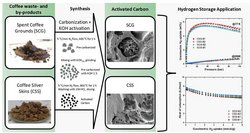SyNergy_Mat Lab

DI Sebastian Stock
Education
- 04/2021 to date Doctoral studies in Materials Science at the Montanuniversität Leoben, Austria, in cooperation with the Institute Laue Langevin in Grenoble, France
- 11/2018 until 03/2021 Master studies in Materials Science at the Montanuniversität Leoben
- 10/2014 until 11/2018 Bachelor studies in Materials Science at the Montanuniversität Leoben
- 09/2009 until 07/2014 Technical College for Mechanical Engineering, Leoben, specializing in metallurgy
- Graduation and diploma examination
- 09/2005 until 07/2009 BG/BRG Neu, Leoben
- 09/2001 until 7072005 Franz Jonas Elementary School, Trofaiach
- Theses
- 07/2020 until 02/2021 Master thesis at the Institute of Physics:
- „The potential of biomass-derived activated carbons for hydrogen storage“
- Experimental Methods: XRD, SAXS, Gas sorption, Raman Spectroscopy
- Awards: Student Award of the Austrian Physical Society (ÖPG), Young Minds Section
- 10/2018 Bachelor thesis at the Institute of Physics:
- „Investigation of a cobalt doped Few-layer-graphene electrode for supercapacitor applications”
- Experimental Methods: XRD, SAXS, Cyclic Voltametry
- 07/2013 High school diploma thesis at Ebner GmbH, Leonding in Austria
Publications
Coffee Waste-Derived Nanoporous Carbons for Hydrogen Storage
Sebastian Stock ACS Applied Energy Materials / SyNergy_Mat Lab
Biological waste such as residues from the food and beverage industry provides a valuable and abundant resource to be used as a precursor for the synthesis of activated carbons that can be subsequently employed as adsorbents for, e.g., hydrogen storage. Materials with a large specific surface area and pores of appropriate size are necessary to achieve reasonable hydrogen adsorption capacity. Here, we present the repeatable synthesis of activated carbons from coffee waste, i.e., spent coffee grounds and coffee silver skins, on the basis of two independently synthesized batches. The carbonization process under nitrogen gas flow followed by chemical activation with solid potassium hydroxide results in microporous carbons with bimodal pore size distribution and specific surface area up to 3300 and 2680 m2/g based on Brunauer–Emmett–Teller and density functional theory methods, respectively. The materials exhibit excellent hydrogen adsorption performance under cryogenic conditions (77 K), reaching high and fully reversible excess gravimetric hydrogen uptake values of up to 5.79 wt % at 37 bar, and total capacities exceeding 9 wt % at 100 bar.

